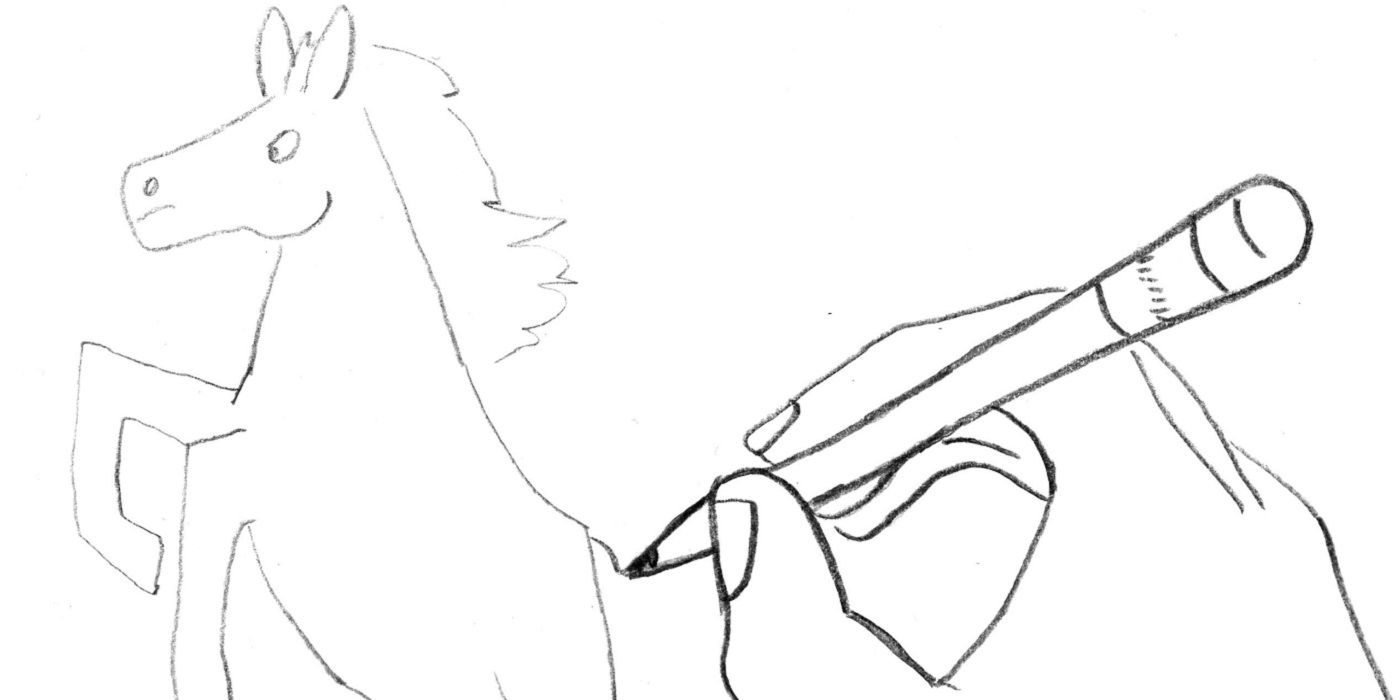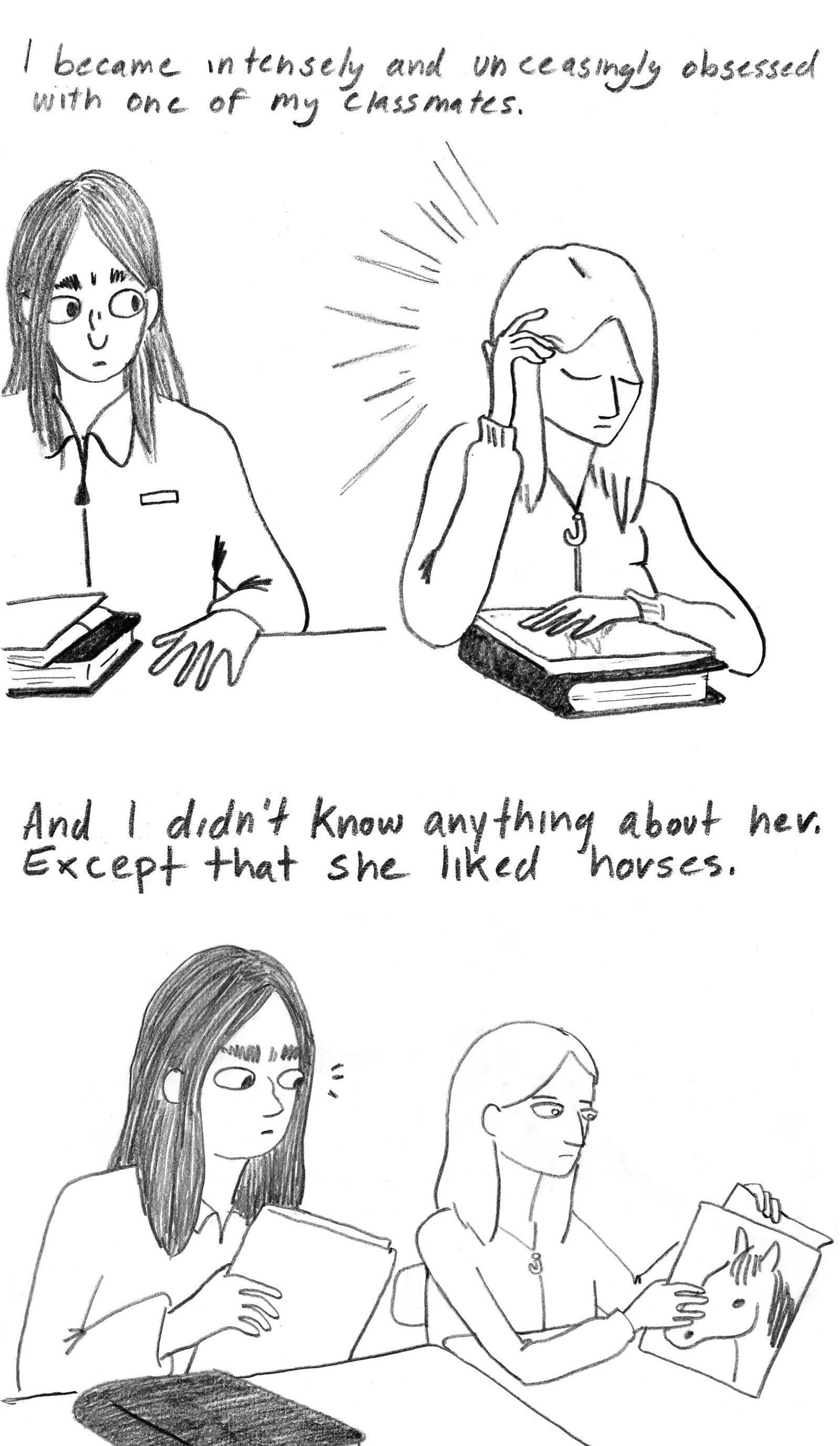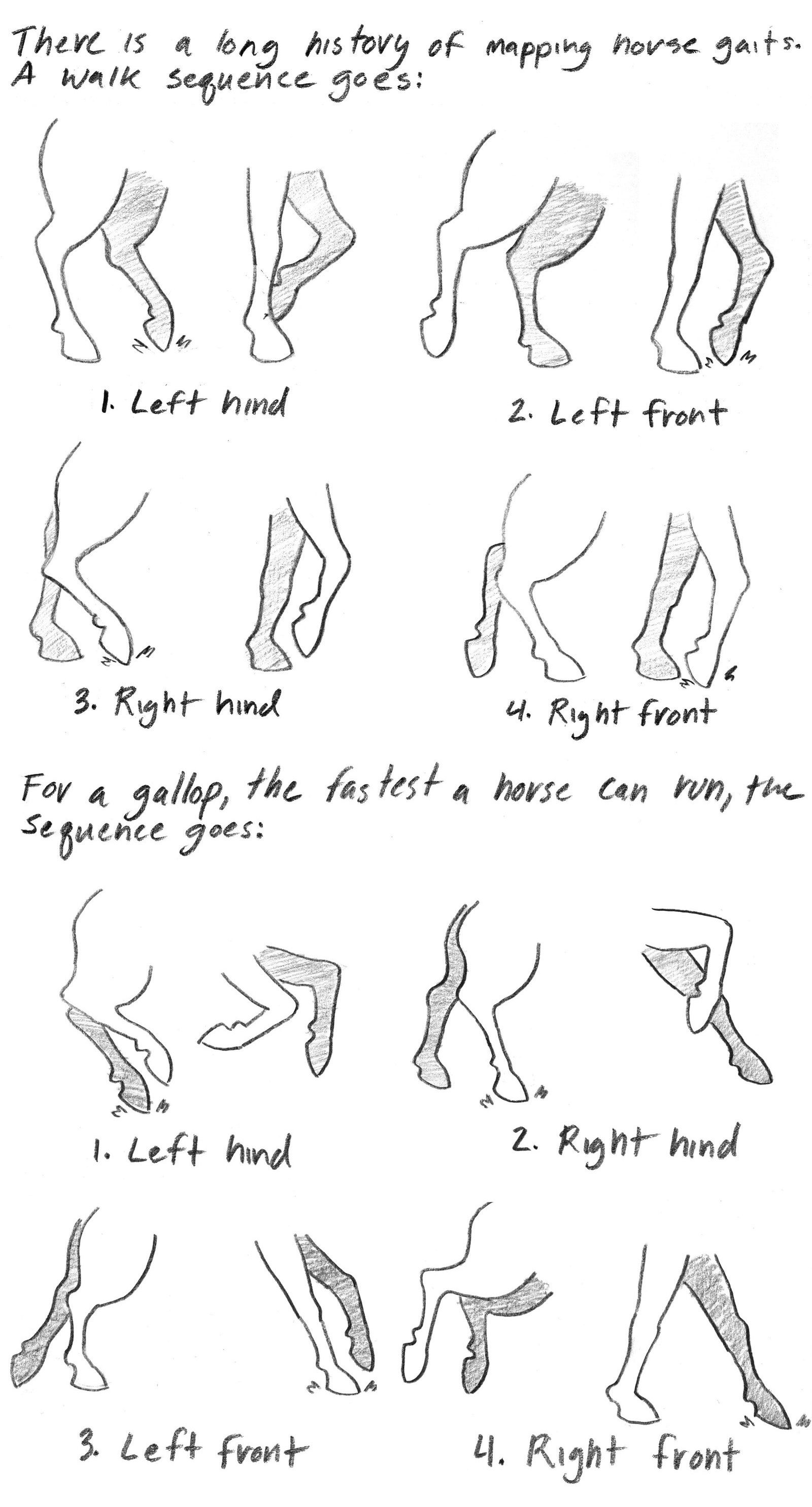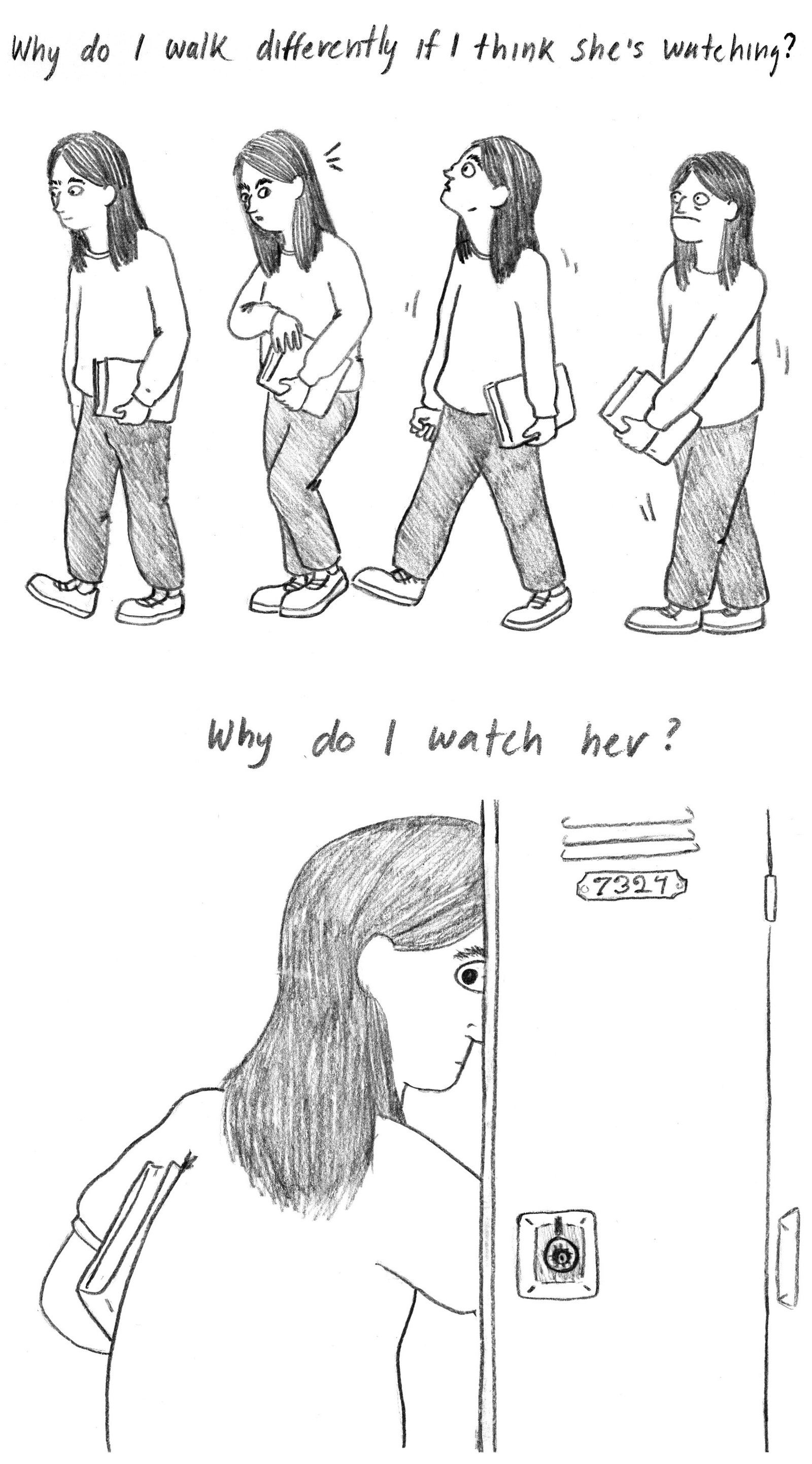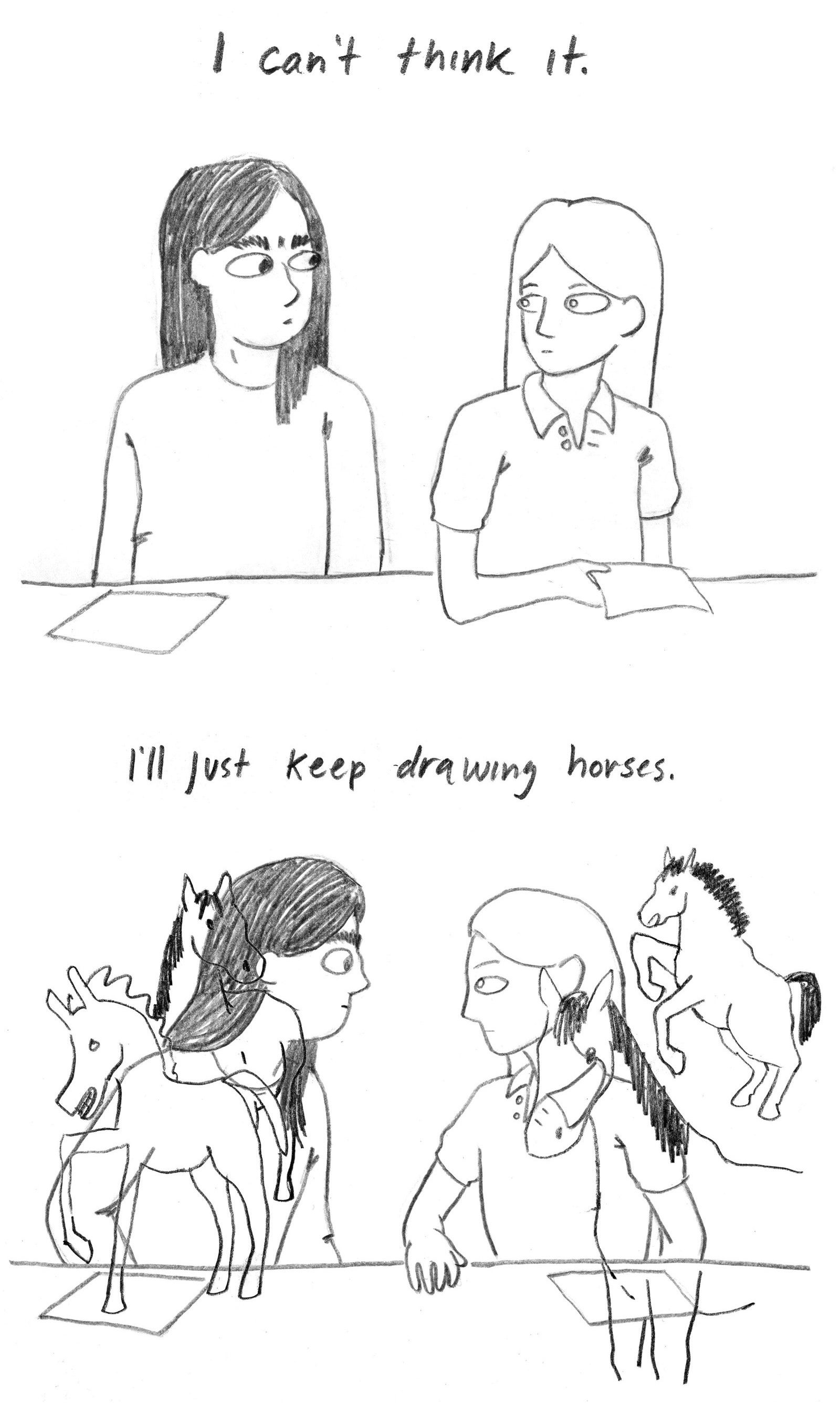In "Reason to Get Excited," I spotlight things from modern comics that I think are worth getting excited about. I mean stuff more specific than "this comic is good," ya know? More like a specific bit from a writer or artist that impressed me.
Today, we look at "How to Draw a Horse," by Emma Hunsinger, the short comic book story that appeared in the New Yorker that recently lost out on the Eisner Award for Best Short Story. It was a very strong category this year and I was a big fan of the winning story ("Hot Comb" by Ebony Flowers), but I was so taken with Hunsinger's story that I figured I would spotlight "How to Draw a Horse" a bit here.
One of the most delightful things about "How to Draw a Horse" is that it does, in fact, show you how to draw a horse, or at least it definitely does address some of the things that go into learning how to draw a horse. As you may or may not know, horses are infamous among artists as being very difficult to draw well. As Hunsinger notes early in the story, horses are so difficult that if you're going to get good at drawing horses, you will have to NEED to draw them well. And, wouldn't you know it, seventh-grade Emma had a very specific need to learn how to draw horses well. There was a girl in her class that she became obsessed with that all Emma REALLY knew about is that she liked horses.
And so we are off on our journey of how to draw horses. Obviously, though, as you can tell, this isn't really about how to draw horses (even though, again, you DO learn how to draw horses in this comic), but rather about the sorts of things that drive a young artist. Hunsinger's first year final project at The Center for Cartoon Studies was called Chunk, and it is about a group of college artists and their various awkward romantic entanglements and Hunsinger brings much of that beautifully awkward energy into "How to Draw Horses," as well ("Horse" predates Chunk, I believe, but just noting the similar energies in the work, not saying that Chunk was a direct influence on "Horse"). I mention this more just to note that you should read Chunk as well as "How to Draw a Horse," but also to accentuate how well Hunsinger captures the fresh energy that comes from awkwardness. No matter how cool you are, there is always a little part of you that feels awkward in some way (just listen to Henry Winkler talk about his heyday as Fonzie, and there was no one cooler than Henry Winkler as The Fonz) and Hunsinger connects to that universal part of ourselves with "Horse."
In a lot of ways, though, she sort of sneaks up on you with just HOW heartfelt the story is, as it is obviously couched in the technical parts of, well, you know, how to draw a horse. Slowly but surely, though, it becomes evident how she is tying the horse-drawing journey in with her own life. Some of it is obvious, well others more subtle. One of my favorite sequences in the book sees Hunsinger examine how horses walk and how horses run...
This is very tricky stuff and it is why ANIMATING horses is even trickier than just drawing them, as the gallop of a horse can be very confusing when you try to put it into motion. Just see the page as listed by Hunsinger above. See how intricate and complex it is? It is maddening to try to then animate that sort of thing.
And then we see the transition, where the study of how the horse moves to a study in how Emma herself walks, as she has become so obsessed with her classmate that it is affects her very mode of walking.
One of the best things that Hunsinger does with this story is to pepper it with familiar moments like, say, a little sister trying to get access to the family computer while seventh-grade Emma is trying to work on her horse drawings or just chatting with her crush. These interactions are almost a secondary language for people, as they are so familiar that we know exactly what each reference is, but you would almost feel silly trying to define it to someone else. You know, "It's that feeling when you're talking to your crush on the computer when your sister tries to use the computer." It sounds goofy, but it's a universal feeling, just perhaps specific to one point in time, technology-wise. You could probably transfer that emotion to, say, a kid in 1985, dragging a phone cord into a closet for privacy when their sibling wants to use the phone.
Similarly universal is seventh-grade Emma's coming to terms with her feelings for her classmate. She wants to be best friends with her, but that's not really what she wants. She wants something more than that, but it is not something that young Emma can properly express, so instead, she turns to drawing horses. And then, in an absolutely stunning finish, we see Emma's true feelings come to light, while she continues to try to literally paper over them with drawings of horses. It is the sort of dynamic storytelling that you can really only pull off in a comic book form and it's just brilliantly clever.
What a clever way to end the comic and what power and emotion pours through those pages. "How to Draw a Horse" is a powerful work that speaks to everyone's soul and uses the comic book form in delightful ways. I can't wait to see what else Hunsinger does in the rest of her comic career.
Okay, this feature is a bit less of a reader-interactive one, as I'm just spotlight stuff in modern comics that specifically impressed ME, but heck, if you'd like to send in some suggestions anyways, maybe you and I have the same taste! It's certainly not improbable that something you found cool would be something that I would find cool, too, so feel free to send ideas to me at brianc@cbr.com!

